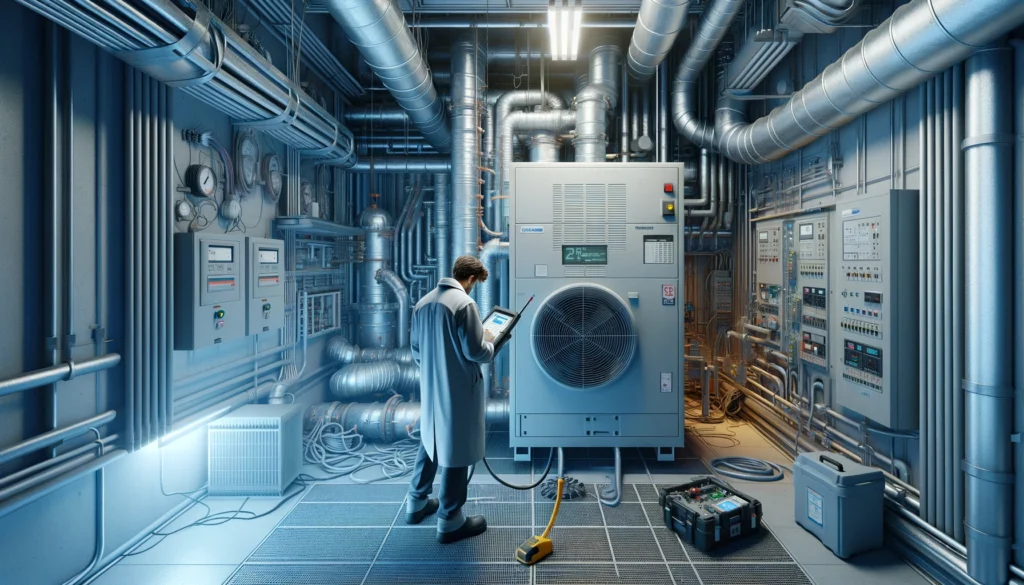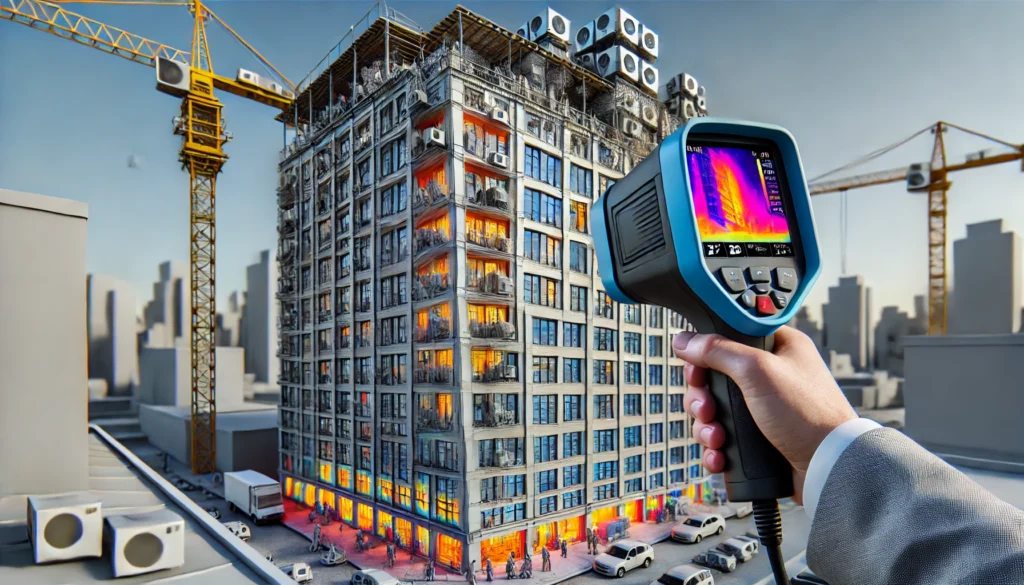Building condition assessment (BCA) is a critical process that involves a detailed evaluation of a building’s structural, mechanical, electrical, and safety systems. Whether for maintenance, renovation, or purchasing purposes, a thorough condition assessment provides essential insights into a building’s current state, identifying potential issues and areas for improvement. This guide covers the importance of building condition assessments, key areas of focus, assessment methods, and best practices to ensure the long-term safety and performance of a building.
1. Introduction to Building Condition Assessment
A building condition assessment (BCA) is a comprehensive evaluation of a building’s physical condition, focusing on various components like structural elements, mechanical systems, electrical systems, and safety features. This assessment aims to identify defects, maintenance needs, and potential risks, providing valuable information for owners, managers, and prospective buyers to make informed decisions about the property.
2. Importance of Building Condition Assessment
Building condition assessments are crucial for several reasons:
- Safety: Identifies structural weaknesses, safety hazards, and code violations that could endanger occupants.
- Maintenance Planning: Helps property managers develop maintenance plans by identifying areas that need repair or replacement.
- Asset Management: Provides a detailed understanding of the building’s condition, aiding in asset management and long-term planning.
- Investment Decision: Offers valuable insights for buyers and investors, revealing the building’s condition and potential costs for repairs or upgrades.
- Compliance: Ensures that the building meets current building codes, safety standards, and regulations.
3. Key Components of a Building Condition Assessment
A building condition assessment covers various aspects of a building’s structure and systems:
Structural Assessment
- Foundation: Evaluate the condition of the foundation, checking for cracks, settlement, or moisture intrusion.
- Load-Bearing Elements: Inspect beams, columns, and load-bearing walls for signs of stress, corrosion, or deformation.
- Roof and Floors: Assess the roof for leaks, damage, and structural integrity. Examine floors for sagging, cracks, or unevenness.
Mechanical Systems
- HVAC Systems: Check the heating, ventilation, and air conditioning systems for functionality, efficiency, and maintenance needs.
- Plumbing Systems: Inspect pipes, fixtures, water heaters, and drainage systems for leaks, corrosion, and proper operation.
- Elevators and Escalators: Ensure that vertical transportation systems are safe, functional, and compliant with safety standards.
Electrical Systems
- Wiring and Panels: Inspect electrical panels, wiring, and connections for safety hazards, outdated components, and code compliance.
- Lighting and Outlets: Test lighting fixtures, outlets, and emergency lighting systems for proper operation.
- Safety Devices: Verify the functionality of safety devices such as smoke detectors, circuit breakers, and GFCIs.
Building Envelope
- Exterior Walls: Examine the exterior facade for cracks, water damage, and signs of wear or deterioration.
- Windows and Doors: Check for gaps, sealant failures, and proper operation to ensure energy efficiency and weather resistance.
- Insulation: Assess the insulation in walls, roofs, and windows to evaluate energy efficiency and thermal performance.
Fire and Life Safety Systems
- Fire Alarms and Sprinklers: Test the operation and coverage of fire alarm systems and sprinkler systems.
- Emergency Exits: Ensure that emergency exits are accessible, properly marked, and equipped with functional exit lighting.
- Fire Extinguishers: Check the availability, condition, and compliance of fire extinguishers and fire suppression systems.
Interior and Exterior Finishes
- Interior Finishes: Inspect walls, ceilings, and floors for signs of damage, wear, or moisture intrusion.
- Exterior Finishes: Assess the condition of exterior finishes such as paint, cladding, and roofing materials for weathering or damage.
4. Methods for Conducting a Building Condition Assessment
A comprehensive building condition assessment involves various methods to gather accurate information about the building’s state:
Visual Inspection
- Surface Assessment: Inspect visible areas of the building for signs of damage, deterioration, or safety hazards.
- Photographic Documentation: Capture photographs of defects and areas of concern for detailed analysis and reporting.
Non-Destructive Testing (NDT)
- Ultrasonic Testing: Use ultrasonic waves to detect internal defects in structural elements like concrete and steel.
- Ground Penetrating Radar (GPR): Identify embedded rebar, voids, and internal defects in concrete structures.
Infrared Thermography
- Thermal Imaging: Detect temperature variations in building components to identify issues like moisture intrusion, insulation deficiencies, and electrical faults.
Material Testing
- Concrete Testing: Extract and test concrete samples to determine strength, durability, and the presence of defects like voids or cracks.
- Soil Testing: Analyze soil samples around the foundation to assess stability and identify potential settlement risks.
5. Steps Involved in a Building Condition Assessment
The building condition assessment process typically involves the following steps:
1. Pre-Assessment Planning
Define the scope of the assessment, including the areas and systems to be inspected. Review building documentation, including plans, maintenance records, and previous inspection reports.
2. On-Site Inspection
Conduct a detailed on-site inspection of the building, covering structural elements, mechanical and electrical systems, safety features, and building finishes. Use specialized equipment for thorough assessment.
3. Data Collection and Analysis
Collect data during the inspection, including photographs, measurements, and test results. Analyze the data to identify defects, maintenance needs, and areas of concern.
4. Reporting
Prepare a comprehensive report detailing the building’s condition, identified issues, and recommended actions for repair, maintenance, or further investigation.
5. Post-Assessment Review
Review the findings with stakeholders, including building owners, managers, and maintenance personnel, to discuss the assessment results and develop a plan for addressing identified issues.

6. Common Issues Identified During Building Condition Assessments
Building condition assessments often reveal common issues, such as:
- Structural Cracks: Cracks in walls, foundations, or load-bearing elements indicating potential structural issues.
- Water Damage: Moisture intrusion, leaks, and water damage in walls, roofs, or basements.
- Mechanical Failures: Malfunctioning HVAC systems, plumbing leaks, and outdated equipment.
- Electrical Hazards: Faulty wiring, outdated electrical panels, and inadequate safety devices.
- Fire Safety Deficiencies: Non-compliant fire alarms, sprinkler systems, and emergency exits.
- Energy Inefficiency: Poor insulation, air leaks, and inefficient lighting affecting energy performance.
7. Pro Inspect Solution: Experts in Building Condition Assessment in Malaysia
For professional building condition assessment services in Malaysia, Pro Inspect Solution provides comprehensive evaluations to ensure the safety, functionality, and compliance of your building. Their services include:
- Detailed Assessments: Thorough inspections covering structural, mechanical, electrical, and safety systems.
- Advanced Testing Methods: Utilizing cutting-edge equipment for accurate detection of hidden issues such as moisture, thermal leaks, and structural defects.
- Comprehensive Reporting: Providing clear, detailed reports with actionable recommendations for repairs, maintenance, or further investigation.
- Regulatory Compliance: Ensuring that your building meets local building codes, safety standards, and industry regulations.
Partnering with Pro Inspect Solution ensures that your building remains in optimal condition, safeguarding occupants and protecting your investment. Learn more about their services at Pro Inspect Solution.
8. Building Condition Assessment FAQs
How do you do a condition assessment?
A condition assessment is conducted by visually inspecting a building’s structural elements, mechanical systems, electrical systems, and safety features. It involves using tools like thermal cameras, moisture meters, and non-destructive testing methods to identify any defects, damages, or potential issues that need repair or maintenance.
What is an assessment in a building?
An assessment in a building involves evaluating its current state, including its structural integrity, mechanical systems, electrical systems, and safety features, to determine its condition, identify any issues, and provide recommendations for repairs or maintenance.
What is a condition report of a building?
A condition report of a building is a detailed document that outlines the findings from a condition assessment, highlighting the building’s overall state, identified defects, potential risks, and recommended maintenance or repair actions.
What is the purpose of the condition assessment?
The purpose of a condition assessment is to ensure the safety, functionality, and longevity of a building by identifying existing or potential issues early on, allowing for timely maintenance and repairs to prevent more significant problems.
What are condition assessments for buildings?
Condition assessments for buildings involve evaluating various aspects like the structure, mechanical systems, electrical systems, and safety features to identify defects, assess the building’s health, and provide recommendations for repairs, maintenance, and compliance with regulations.
What are the benefits of condition assessment?
The benefits of condition assessment include improved safety for occupants, early detection of potential issues, informed decision-making for repairs and maintenance, enhanced property value, and compliance with building codes and regulations.
9. Conclusion
Building condition assessments are essential for maintaining the safety, functionality, and longevity of properties. By covering key components such as structural integrity, mechanical and electrical systems, and safety features, these assessments provide a comprehensive understanding of a building’s condition. For expert building condition assessment services in Malaysia, Pro Inspect Solution offers the expertise and advanced technology needed to protect your investment and ensure occupant safety.


